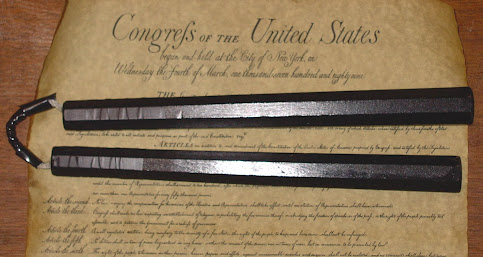Many people have heard of the Teenage Mutant Ninja Turtles member Michelangelo (left), who ably wields two sets of nunchaku simultaneously. Perhaps fewer are familiar with Napoleon Dynamite, who speaks highly of his own “numchuck skills.” Because skilled nunchaku twirling creates an amazing visual effect, twirling with special lighting accessories has become a special visual art form. Moving over to the more serious martial-arts aspects, there are, of course, a World Nunchaku Association, a North American Nunchaku Association, and an International Tech Do Nunchaku Association, to name a few. [OBSOLETE TEXT AND LINK REMOVED 6/24/24] (For a discussion of the word “nunchaku” and its variations in popular usage, as well as links to past Black Belt magazine commentary on nunchaku, see Ben Zimmer’s on-line article.)
In spite of all this, arguments have already been made and will likely continue to be made that Second Amendment protections should not extend to the nunchaku because it is “dangerous and unusual.”









